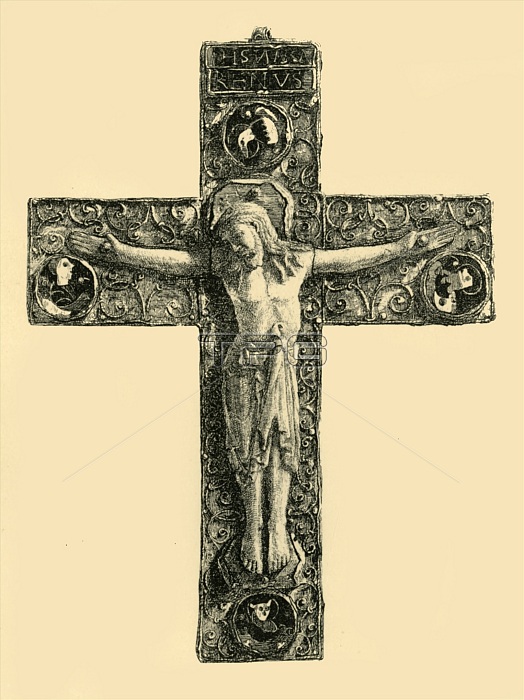
Reliquary Cross, 10th century, (1881). Etching of an Anglo Saxon crucifix made c900-1000 AD, possibly in Winchester or Germany. The cross is of cedar wood decorated with gold filigree work and enamels. The figure of Christ, carved in walrus ivory, is held in place by golden nails through the palms. The enamels may have been made by an English goldsmith familiar with German work. A dried human finger was found in the cavity beneath the figure of Christ, indicating that the cross was designed to hold relics (physical remains or the personal effects) of saints. From "The South Kensington Museum", a book of engraved illustrations, with descriptions, of the works of art in the collection of the Victoria & Albert Museum in London (formerly known as the South Kensington Museum). [Sampson Low, Marston, Searle and Rivington, London, 1881]
| px | px | dpi | = | cm | x | cm | = | MB |
Details
Creative#:
TOP25072283
Source:
達志影像
Authorization Type:
RM
Release Information:
須由TPG 完整授權
Model Release:
No
Property Release:
No
Right to Privacy:
No
Same folder images:

 Loading
Loading